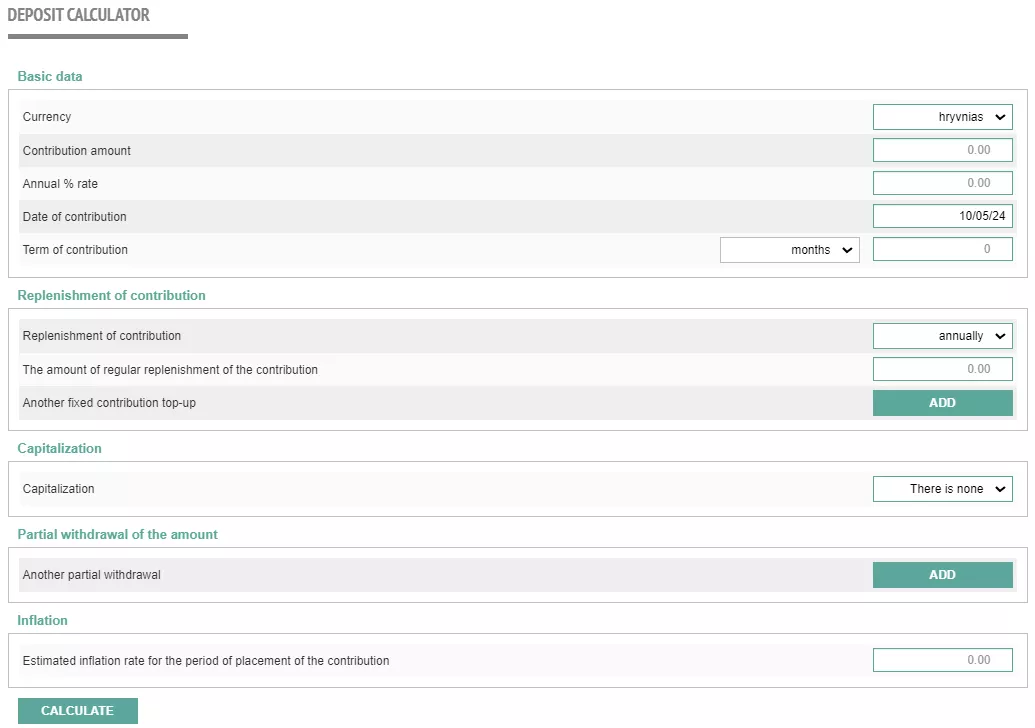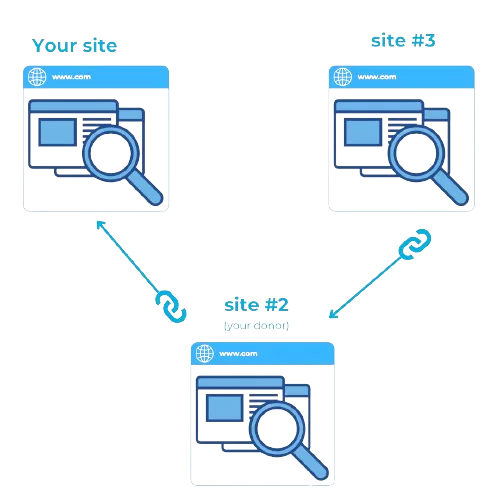Five Tips on Getting High-Quality External Links to Your Website
There are more than 1.09 billion websites in the world. Needless to say, standing out from the crowd is crucial, and you need to increase the visibility of your resource in search engines. One of the most effective methods to do so is link building, i.e., obtaining high-quality external links or backlinks.
In this article, I will share my practical experience with the best link building methods, both free and paid, that work to increase organic traffic.
Before you focus on link building
You should check if your website is ready for promotion and prepare it if it is not. Otherwise, all link building methods, including obtaining external links, will not produce the best results.
- Fill the website with relevant and engaging content. High-quality content that is truly useful to site visitors is a must.
- Make the design eye-catching and unique. Visual designs that evoke emotions are more memorable and encourage loyalty.
- Focus on usability. If the site is easy to navigate, the chances of a user making a purchase are much higher.
- Remember to consider the page speed. If your site loads faster than your competitors, it will encourage the user to choose your business over others.
- Focus on the SEO of your website. This way, search engines will display the resource to the most interested and relevant audience.
Link building and its importance in website promotion
Link building is the process of obtaining external links to a website from other websites, forums, blogs, and social networks. It is an important component of SEO promotion, as it increases the authority of the resource as seen by search engines. It also contributes to brand awareness and attracts the target audience to the website.
Link building can be compared to a referral. When many reputable resources link to a website, they lend their own authority to the linked site. Search engines would then naturally consider such a resource to be more reliable. Therefore, it’s important to pay attention not only to the quantity but also to the quality of the donors, i.e., the sites where your links are placed.
In addition to its technical function, link building will attract new visitors to a website. If you manage to add truly useful content to another resource, people will follow the link to your site. And most importantly, they will share the content.
Read more about what link building is and how to evaluate the quality of your own or a donor’s website and the quality of backlinks.
Let’s discuss the most effective methods of obtaining external links.
Five tips to get quality links to your website
1. Focus on the quality of the content you post on the donor site.
Many people ignore this advice and create generic content. They often use AI to generate text, but they fail to delve into the content of the generated text or make edits to enhance it. This is a big mistake, and Google’s recent update confirms it.
Creating generic content may still work for promotion on PBN networks or sites with low rankings, but it will not bring significant benefits. To get a link from a truly authoritative site, you need to make an effort to create high-value content.
Before writing the material, check with the site about its requirements and recommendations for the future article. Very often, reputable sites will want to approve the topic and the links before the article is written.
In general, content can be diverse and include anything from infographics, product recommendations, to informational articles. The important thing is to engage the audience of the website where you want to place your content and your target segment separately.
Interactive content has great potential to attract users. These include tests, mini-games, and useful tools such as converters, calculators, etc.
For example, let’s say you are creating content for a financial topic. You can add an online currency exchange calculator or a calculator that tells the user how much money they should be saving per month based on their income.
Sometimes, very well-known resources do not accept third-party content at all, and all of their articles are written by their in-house authors. You can, however, link to your site in the text. The process is as follows: start by contacting the editorial office and prepare a detailed technical requirements document. After the article is written and approved, it is published with your link in it. It’s not fast, but the result is worth it.
Dive into our glossary for key SEO definitions to boost your expertise!
2. Exchange links with other interested sites.
Sometimes webmasters are not interested in linking to another resource for free, even if the content is very valuable and helpful. In such cases, offer a link exchange.
The donor site should be relevant to your topic and not a direct competitor.
For example, if you repair bicycles, you can exchange links with a site that sells bicycles. Each site can create its own content for the link placement, according to its own editorial line and policies.
Note: For the exchange to be fair and equitable, your site and the donor site should have similar domain rankings (DR) and traffic indicators.
The main disadvantage is that you have to link to the affiliate’s site in return. This disperses the link profile, which is the set of all links and anchors leading to and from the site. To maintain a site’s authority, it is important to have more inbound than outbound links.
Since the ratio of inbound to outbound links is a crucial indicator of a site’s quality, this method cannot be used as the primary one. It only works in combination with other link building methods.
But if you still intend to use this method, there is a solution: a three-way (or ABC) link exchange.
For example, as the owner of a bicycle repair site, you get a link from a site that sells bicycles. In return, you guest post on another site that sells cycling clothing. In other words, there are no reciprocal links, the search engine doesn’t see anything suspicious, and everything looks as organic as possible.
3. Don’t be afraid to get creative in order to get links.
This tip will help ensure that you don’t have to look for platforms to post links; instead, they reach out to you and offer collaboration. One way to achieve this is to create a story that will go viral in the media and social networks: an unusual event, a promotion, or a collection. In addition, this method will increase brand awareness.
Here’s an example of how a media outlet covered an advertising campaign extensively, and the business owner received many backlinks.
Such backlinks, even if they have a “nofollow” tag (meaning that the search engine crawler is not allowed to follow the link), significantly improve the link profile. This is due to the high authority of media sites in search engines.
4. Use outreach as the main link building method.
Outreach is the best way to get high quality external links while maintaining a good balance of quantity to quality.
It is a direct request to the owner of another website (the donor) to place a link on their site that leads to your website (the acceptor). This is usually done on a commercial basis.
Outreach helps you get links from sites that, at first glance, seem impossible.
For example, let’s say you have found a high-quality pet care site, but you have a job search site. They are far apart in terms of content, and it is unlikely that the platform will link to your site.
But thanks to outreach, you can write an article about veterinary clinics and how to choose a good vet. Or about pet care services, such as finding a nanny for your dog, and then add links to your own job search site with related job openings.
In this context, the link is placed as organically as possible.
If a link does not correspond to the context of the article naturally, I do not recommend placing it — the search engine may penalize both the acceptor and the donor sites for trying to deceive the algorithm.
Outreach in the form of collaboration can be done either for free or on a commercial basis (guest posting).
Free outreach
This is a very effective and common way to get a link and reach a new, engaged audience. Such cooperation can be mutually beneficial. After all, the site where the article is published gets valuable and relevant content, and you get a backlink.
Pros:
- Free placement.
- The content is valuable to users, and it enhances both websites.
- It encourages partnership with the webmaster. Often, guest posting is the first step to collaborating in other formats.
- You will benefit from brand presence on other companies’ websites, not just news resources.
- You can obtain links from unique donors who are not willing to publish low quality content and, therefore, are not available to competitors.
- Free outreach maximizes the organic nature of such links.
Cons:
- It can be difficult to find the right platform.
- It takes time to agree on the terms and the content.
- The donor site becomes the copyright owner of a third-party article, and they might later change or even delete the content.
Outreach on a commercial basis (guest posting)
By using this method, you will immediately increase the number of potential donors to your site. Donor sites are generally more attracted to commercial offers to post content, and this type of outreach speeds up the backlink process significantly.
Pros:
- It is the fastest of the five suggested methods of link placement.
- There is a much wider range of potential donors.
- It is possible to delegate this work to specialists who have exclusive conditions and contacts with webmasters.
- You can generally choose to write the content yourself or use the services of a writing platform.
- There is a possibility of agreeing on individual requirements for linking and publishing.
Cons:
- The links are paid placements.
- You need to develop a strategy; otherwise, a sharp increase in inbound links will look suspicious to the search engine.
- Some sites may label third-party content as sponsored or advertised.
Google is trying to combat artificial methods of link building and prohibits link buying.
However, if you adapt to the style of the site as much as possible, it is impossible to distinguish commercial content from a regular article. Therefore, it is better to outsource this work to specialists who have established relationships with webmasters and can therefore provide certain guarantees for link placement.
Case study. One of our clients approached Netpeak Agency with a request to place an article with a “dofollow” link, i.e., an open link for indexing, in a reputable media outlet.
When they tried to place the article themselves, they received a response that the link could only be “nofollow”. However, since our agency has developed partnerships with this resource, they agreed to fulfill our request with an open link as an exception.
Due to the large number of spammy link builders, this method has become somewhat discredited. Therefore, it is important to approach the process correctly and not risk getting negative feedback from webmasters.
5. Get placed on high-quality donor websites.
Good link building is done by maintaining a balance of quantity versus quality of donors. Therefore, if you decide to engage in link building, it is better to do it properly to ensure the maximum benefits for your site.
The quality of a site is always a very individual concept, because different experts have their own vision of a high-quality site. But in general, an affiliate site can be evaluated by the following criteria:
- The topic is relevant to your business. For example, a website for a construction company is not appropriate for promoting a website that sells building materials.
- The selected domain is authoritative. To find out, you can check the DR parameter on Ahrefs or DA on MOZ.
- There is sufficient traffic. It is important that the traffic is organic (i.e., users come to the site from search results). Pay attention to the regionality of this traffic, because if you are planning to promote your product on the German market, you are probably not interested in traffic from India.
- The site does not give out links to everyone and anyone. The donor site transfers a part of its authority to the link, so it is important that it carefully checks who it links to. Links should be thematic, and there shouldn’t be any sites with prohibited topics among them. In the latest update, Google emphasizes this a lot.
- It looks visually appealing and active. You can visually tell whether the site has real users or whether the only purpose of its creation is to sell links.
Once you have reviewed the site against the above criteria, you will have a sense of whether the site is suitable for your needs. After the analysis, it will be clear whether it is worth pursuing a link from this particular web resource. Ultimately, the main question is whether your article is relevant and interesting enough for readers to follow the link.
Conclusions
- Link building is an important part of the SEO promotion process for a website.
- For link building to be effective, you must first focus on your own domain.
- Create engaging, useful content that is valuable to readers.
- Swapping links with other webmasters is an underrated and free way to get links.
- Be creative, and don’t be afraid to go viral! This is a great way to get backlinks from reputable media.
- Typically, outreach is the main strategy used for link building.
- When building your link equity, try to maintain a balance between the quantity and quality of links.
Related Articles
Five Steps to Building a Keyword List and Clustering Keywords
In this article, I'll show you how to identify and group keywords in a way that will effectively attract your target audience
Amazon Dynamic Bidding: The Strategy and Psychology Behind Top Brands
Dynamic bidding on Amazon isn’t just another checkbox in your campaign settings; it’s the difference between throwing money at the Amazon advertising wall and orchestrating a symphony of strategic bid adjustments that separate the pros from the pretenders
A Netpeak Case Study: How to Generate Leads Through LinkedIn and Get Results in Six Months
We show our approaches step by step







